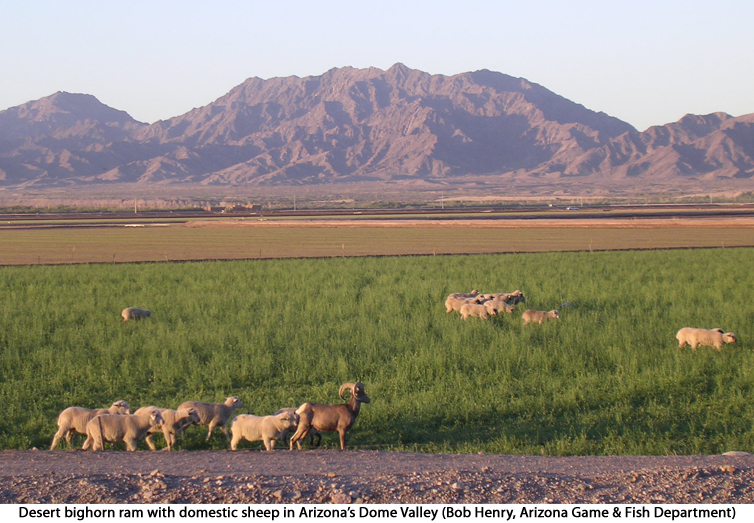INTRODUCTION
Though conflicts have heated up in recent years, controversy over management of wild sheep is not new. According to Bleich and Weaver:
“When V. C. Bleich began work with [the California Department of Fish and Game] in 1973, he raised some questions about the status and conservation of those unique ungulates, and a high-level administrator responded that, ‘We don’t talk about them, because they are controversial and the subject is politically sensitive’” (2007, 55-56).
Thirty-four years later, bighorn disease researcher William J. Foreyt stated: “The biology is very clear, but the politics change by the month” (Hoffman 2007). The Montana Department of Fish, Wildlife, and Parks notes that:
“Across the west where bighorn sheep occur there often is controversy where that distribution overlaps with domestic animals, particularly domestic sheep. The controversy stems from the concept that when domestic sheep or goats come together with bighorn sheep the bighorn sheep often die. While supported by research and widely recognized, this concept is not accepted by all parties” (2010, 3).

Controversy associated with bighorn-domestic sheep interaction management involves: the challenging nature of such management, economic consequences for sheep producers, livestock industry opposition, and certain credentialed domestic sheep industry advocates. While much of the other information on this site came from peer-reviewed literature and government documents, a large amount of the information on the controversy pages does not cleanly fit into academic writing and is derived from newspapers such as The High Country News, The Idaho Statesman, etc. That fact is worth considering when judging the credibility of said information.
Managing wild-domestic sheep interaction can be difficult. According to Heimer, “a bighorn manager must face the down and dirty work associated with negotiating, establishing, and maintaining separation of bighorns from domestic sheep . . . . This is hard administrative work, and not a particularly preferred activity for field biologists or administrators in states with traditions of domestic sheep ranching” (2000, 133). With conflicts, emphasis is placed on managing domestic sheep because: “There is virtually no practical way to control movements of young bighorns, but control of domestic sheep is possible” (DBC Technical Staff 1990, 34).
REFERENCES
Bleich, Vernon C., and Richard A. Weaver. 2007. Status of mountain sheep in California: Comparisons between 1957 and 2007. In transactions of Desert Bighorn Council’s 49th Annual Meeting, Las Vegas, NV. April 3-6.
Desert Bighorn Council Technical Staff. 1990.Guidelines for the management of domestic sheep in the vicinity of desert bighorn habitat. In transactions of DBC’s 34th Annual Meeting, Hermosillo, Sonora, Mexico. April 4-6.
Heimer, Wayne E. 2000. The Foundation for North American Wild Sheep – A sheep biologist’s view from the inside. In proceedings of Northern Wild Sheep and Goat Council’s 12th Biennial Symposium, Whitehorse, YK. May 31-June 4.
Hoffman, Nathaniel. 2007. Sheep vs. sheep: A legal battle over Hells Canyon grazing could determine the future of wild sheep and sheep ranching across the West. High Country News. October 1. http://www.hcn.org/issues/355/17251 (accessed March 4, 2009).
Montana Department of Fish, Wildlife, and Parks (MFWP). 2010. Montana Bighorn Sheep Conservation Strategy: 2010. Helena. http://fwpiis.mt.gov/content/getItem.aspx?id =397 46 (accessed October 15, 2011). [govt. doc.]
